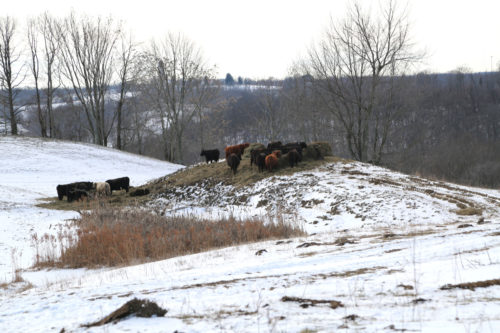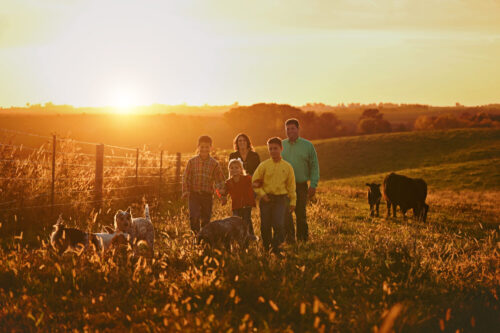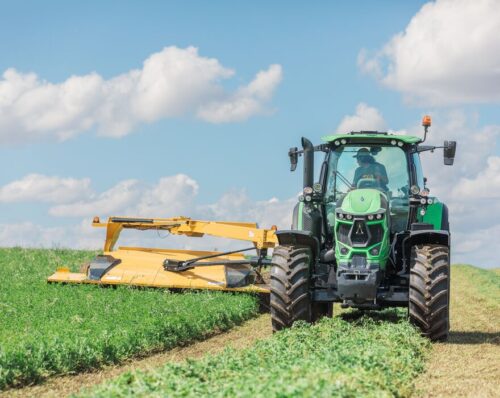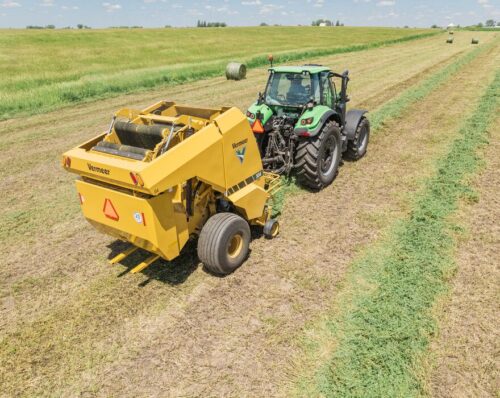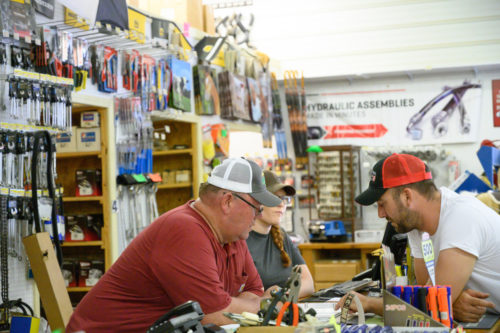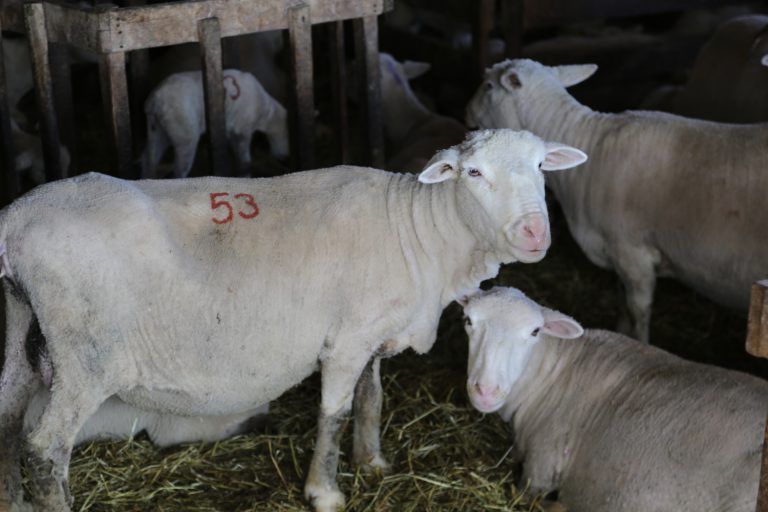
A Family Sheep Farm 200 Years in the Making
June 2016
On a farm in eastern Ohio, three generations of the Moore family work together managing land that’s been in the family for two centuries (eight generations). Rick Moore, landowner, works with determination each day with his father, Stanley, and son, Steven, to manage a farmstead that was established the same year Indiana became the 19th state in the Union.
Up until 1833, it was the President of the United States who authorized land grant deeds, and according to Rick, the original deed for the Moore farmstead was signed on August 24, 1816 by James Madison, the nation’s fourth president. The sheepskin deed, which is still in the family, granted the Moores 156 acres of land that would be forever known as Cottage Hill Farm.
Fast forward 200 years and Cottage Hill Farm has continued to grow as it was passed down from one generation to the next, and today it comprises of 700 deeded acres. The Moore family rents an additional 2,300 acres, making their current farmstead operation a sizable 3,000 acres in total. This couldn’t have happened, Moore said, without a continued commitment throughout the years.
“There’s always been someone who’s wanted to stay on the farm,” Moore said. “My son Steven, who is the eighth generation, had made up his mind from the time he was seven years old that he wanted to farm. Even during school when teachers would try to dissuade him and tell him it wasn’t a good idea, he would say, ‘Well my dad and granddad did it, (so) I think I’m going to do it too.’ It takes a different (kind of) person to do that.”
Moore said that much of the farm’s long-lived success is a direct result of one common inherited trait: a
love for agriculture.
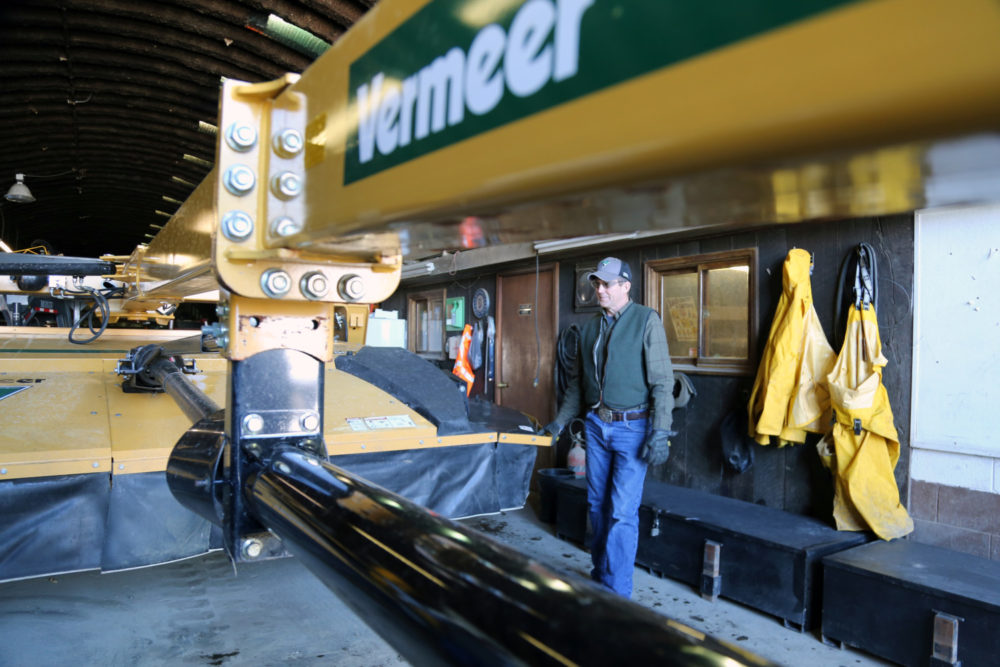
“You can’t just say, ‘Ah yeah, I think I’ll farm.’ You have to commit to it and you have to love it. It’s all about the love of the land and the love of what you do because (everyone) knows it’s not the money,” Moore joked.
The Moore family stays busy year-round with its 800-head ewe production operation.
Up until lambing season (which begins in January at Cottage Hill Farm), all ewes remain outside in the pasture, but when lambing time approaches for that particular flock, they’re herded into barns to be monitored around-the-clock in shifts by Rick, Steven and Stanley.
“Once they come into lambing, we feed twice a day,” Moore said. “As they lamb they go into a 4-by-4-foot pen, and they’ll stay in that pen — depending on whether it’s a single, twins or triplets — for anywhere from 18 to 30 hours. Then they will be identified, docked and then let out with the rest of the ewes and lambs.”
Once they have been turned to pasture, the Moores utilize their homegrown hay and feeding system to keep the herd well fed. Cottage Hill Farm has 700 acres dedicated solely to hay production, and Moore said they take great pride in making quality hay.
“I have about 100 acres of pure alfalfa and then the rest is good grass hay,” Moore explained. “I’ll bale 2,600 round bales a year and Steven will bale about 12,000 little square bales.”
Cottage Hill usually yields four cuttings per year with the first cutting in May or June, depending on the weather. With such a large amount to cut, Moore found that his previous mower was not able to keep up with their needs.
“(With the old mower) it streaked from the time it was new — it never mowed clean,” Moore recalled.
The cutting process was prolonged even further when the belts on Moore’s old mower broke just about every time he went out to the field. It got to the point where he had to carry four spare belts with him at a time just to mow.
“I had the (old mower’s) dealer out and they did everything they could do to try to make it work,” Moore said. “I finally had (a representative) out from the company and he made the comment, ‘Well you’re getting most of (the hay).’ And that didn’t go over real well.”
Moore upgraded to the Vermeer MC3700 mower conditioner and noticed a significant difference
right away.
“The Vermeer machine runs a lot easier than the other brand; I’m really pleased with that,” Moore said with an acre-wide smile. “I love that hitch. You back in, the pin drops, hook the power takeoff up, hook
the hoses up and go.”
It’s the simplicity and durability of the MC3700 that Moore said makes all the difference.
“Man, it’s a joy mowing now. The other (mower) you dreaded. Every time you went to the field you knew you’d end up changing a set of belts before you went home. You know, you’re looking at 20 minutes to a half hour to switch out belts, and you need to be mowing,” he said.
After the hay is cut and baled, the finished bales are positioned strategically around the pasture to streamline the feeding process. Steven will roll bales down the hillside to feed up to 100 head at once. This trick, Moore said, has been a real time-saver.
“Once lambing season is over and they go to grass, we check them once a week and it’s just beautiful,” Moore said. “There’s nothing better than to see a bunch of ewes and baby lambs out on green grass playing. That makes you feel good; you can survive another year now!”
The flock is moved every two weeks and checked each Sunday. The varying generations ride out together for the check on horseback as a part of a “family ritual.”
“It’s a little quiet time for us, and we still work everything off horseback. Some of our farm is a little rugged and some of it you couldn’t even ride a four-wheeler or an ATV on it,” Moore said.
"I love that hitch. You back in, the pin drops, hook the power takeoff up, hook the hoses up and go."
When it comes to ewe production, there’s one caretaking task that the Moore clan does not enjoy.
“They are a lot of work; sheering is drudgery,” Moore said. “Steven and I will sheer somewhere between 1,600 and 1,700 head a year in amongst everything else we do — it’s very labor intensive. We don’t enjoy the sheering part.”
According to Moore, Cottage Hill Farm starts with a purebred Merino ewe and breeds them with a Dorset ram to create a hybrid. The combination results in a finer wool from the Merino genetics and better milking and mothering instinct from the Dorset genetics. These resulting half-blood ewes are then crossed with a black-faced Suffolk ram to create their marketed lambs. By breeding this way, the Moores are able to sell large quantities of “cookie cutter” niche lambs at just the right weight, which is what their buyers want.
“Since sheep are a dual-purpose animal, we try to make money out of both purposes,” Moore said. “We expect to make money on the wool as well as the lambs that are sold. We’re in this for the long haul.”
As for the future of the farmstead, Moore has hopes for another generation to take interest after Steven, but refuses to expect anyone to take over.
“I never think it’s fair to put that kind of pressure on the next generation to keep it going, because if you don’t love it you would hate every day when you got up and went to work,” Moore explained. “I’ve been fortunate that I love what I do and I’ve never had to work a day in my life.”
Although the future may be uncertain, the traditions are safe with the three current generations of the Moore family working on Cottage Hill Farm.
“Each generation has added to the farm; they’ve always kept it going,” Moore said. “If it wasn’t for our ancestors, we wouldn’t be where we are today. (The family) was just looking to make a living and as it turns out we ended up making a bit of a legacy.”

